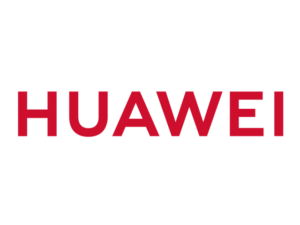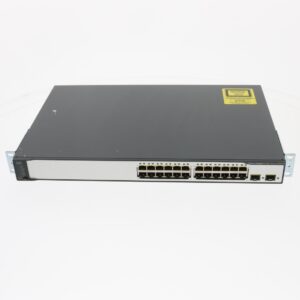Cisco 888EA. Networking standards: IEEE 802.1p, IEEE 802.1Q, IEEE 802.3, IEEE 802.3ah, IEEE 802.3u, Ethernet interface type: Fast Ethernet, Cabling technology: 10/100Base-T(X). DSL specification: G.991.2, G.SHDSL Annexes A/B/F/G. Routing protocols: BGP, EIGRP, HSRP, OSPF, Management protocols: SNMPv3, SSH, CLI, HTTP, RADIUS, TACACS+, Supported network protocols: IPv4, IPv6, DNS, PPPoE, PPPoA, HTTPS, FTP, Telnet. Security algorithms: 3DES, 128-bit AES, 192-bit AES, 256-bit AES, 802.1x RADIUS, DES, HTTPS, SSH, Firewall security: Network address translation (NAT) firewall, VPN support: IPsec. Flash memory: 128 MB, Internal memory: 256 MB, Certification: CFR, CISPR22, CISPR24, EN, ICES, KN 22, VCCI, AS/NRZThe Cisco® 880 Series Integrated Services Routers (ISRs) combine Internet access, security, voice, and wireless services onto a single, secure device that is simple to use and manage for small businesses and enterprise small branch offices and teleworkers. The Cisco 880 Series delivers features including firewall, content filtering, VPNs, and wireless LANs (WLANs) at broadband speeds to small offices. Easy deployment and centralized management features enable enterprises or service providers to deploy the Cisco 880 Series in small branch offices or small businesses.Cisco 880 Series Integrated Services Routers are fixed-configuration routers that provide collaborative business solutions for secure voice and data communication to small businesses and enterprise teleworkers. They offer concurrent broadband services over third-generation (3G), Metro Ethernet, and multiple DSL technologies to provide business continuity. Wireless 802.11n and 3G offer LAN and WAN mobility. The routers provide the performance required for concurrent services, including firewall, intrusion prevention, content filtering, and encryption for VPNs; optional 802.11g/n for mobility; and quality-of-service (QoS) features for optimizing voice and video applications. In addition, the web-based Cisco Configuration Professional configuration tool simplifies setup and deployment. Centralized management capabilities give network managers visibility and control of the network configurations at the remote site.
Product categories
Products
-
 LENOVO 4C57A08979 - Mellanox ConnectX-5 EDR IB/100GbE VPI Single-port x16 PCIe 3.0 HCA
Rated 0 out of 5
LENOVO 4C57A08979 - Mellanox ConnectX-5 EDR IB/100GbE VPI Single-port x16 PCIe 3.0 HCA
Rated 0 out of 5 -
 LENOVO 4XG7A07185 - Intel Xeon Gold 6126T 12C 125W 2.6GHz Processor Option Kit SR530
Rated 0 out of 5
LENOVO 4XG7A07185 - Intel Xeon Gold 6126T 12C 125W 2.6GHz Processor Option Kit SR530
Rated 0 out of 5 -
 LENOVO 41E9405 - PW 1 Year Onsite Repair 24x7 Same Business Day
Rated 0 out of 5
LENOVO 41E9405 - PW 1 Year Onsite Repair 24x7 Same Business Day
Rated 0 out of 5 -
 DELL 234T7 - Riser with Two PCIe Gen3 FH slots One
Rated 0 out of 5
DELL 234T7 - Riser with Two PCIe Gen3 FH slots One
Rated 0 out of 5 -
 LENOVO 45W4268 - Layer 3 Premium Activation C2X
Rated 0 out of 5
LENOVO 45W4268 - Layer 3 Premium Activation C2X
Rated 0 out of 5 -
 FUJITSU V26808-B8654-V10 - Intel Xeon Processor E5-2450 2.1 GHz
Rated 0 out of 5
FUJITSU V26808-B8654-V10 - Intel Xeon Processor E5-2450 2.1 GHz
Rated 0 out of 5 -
 CISCO N9K-PAC-1200W-B - Nexus 9300 1200W AC PS, Port-side Exhaust
Rated 0 out of 5
CISCO N9K-PAC-1200W-B - Nexus 9300 1200W AC PS, Port-side Exhaust
Rated 0 out of 5 -
 DELL 9R3XX - BC5720 1GbE 2PORT Mezz 9R3XX
Rated 0 out of 5
DELL 9R3XX - BC5720 1GbE 2PORT Mezz 9R3XX
Rated 0 out of 5 -
 EMC 32BD09BC1SCF-B191 - SATADOM-SL 3ME3
Rated 0 out of 5
EMC 32BD09BC1SCF-B191 - SATADOM-SL 3ME3
Rated 0 out of 5 -
 HITACHI DKC-F810I-1R8JGM - HDS 1.8TB SAS 10K HDD SFF for VSP-G system
Rated 0 out of 5
HITACHI DKC-F810I-1R8JGM - HDS 1.8TB SAS 10K HDD SFF for VSP-G system
Rated 0 out of 5





















